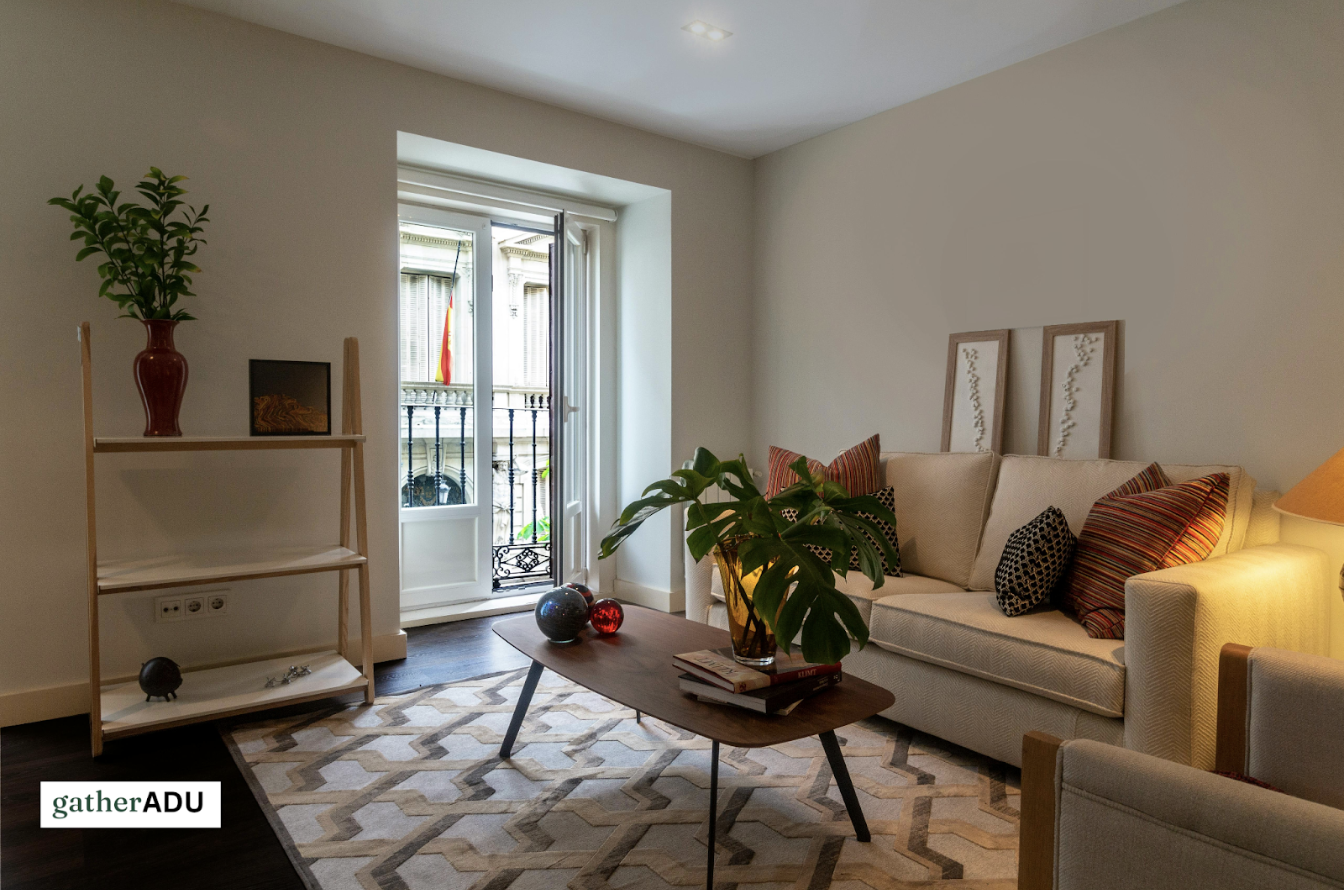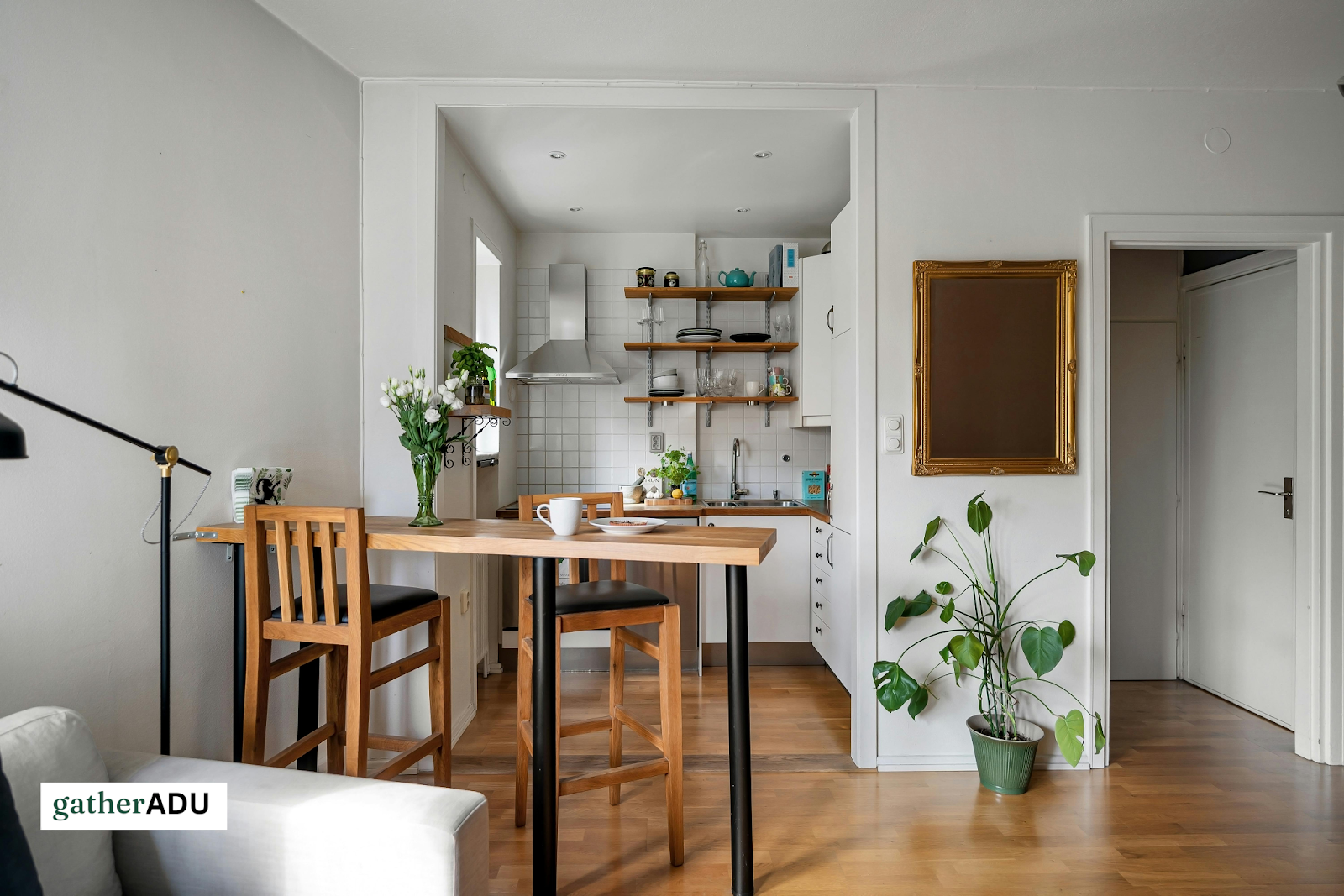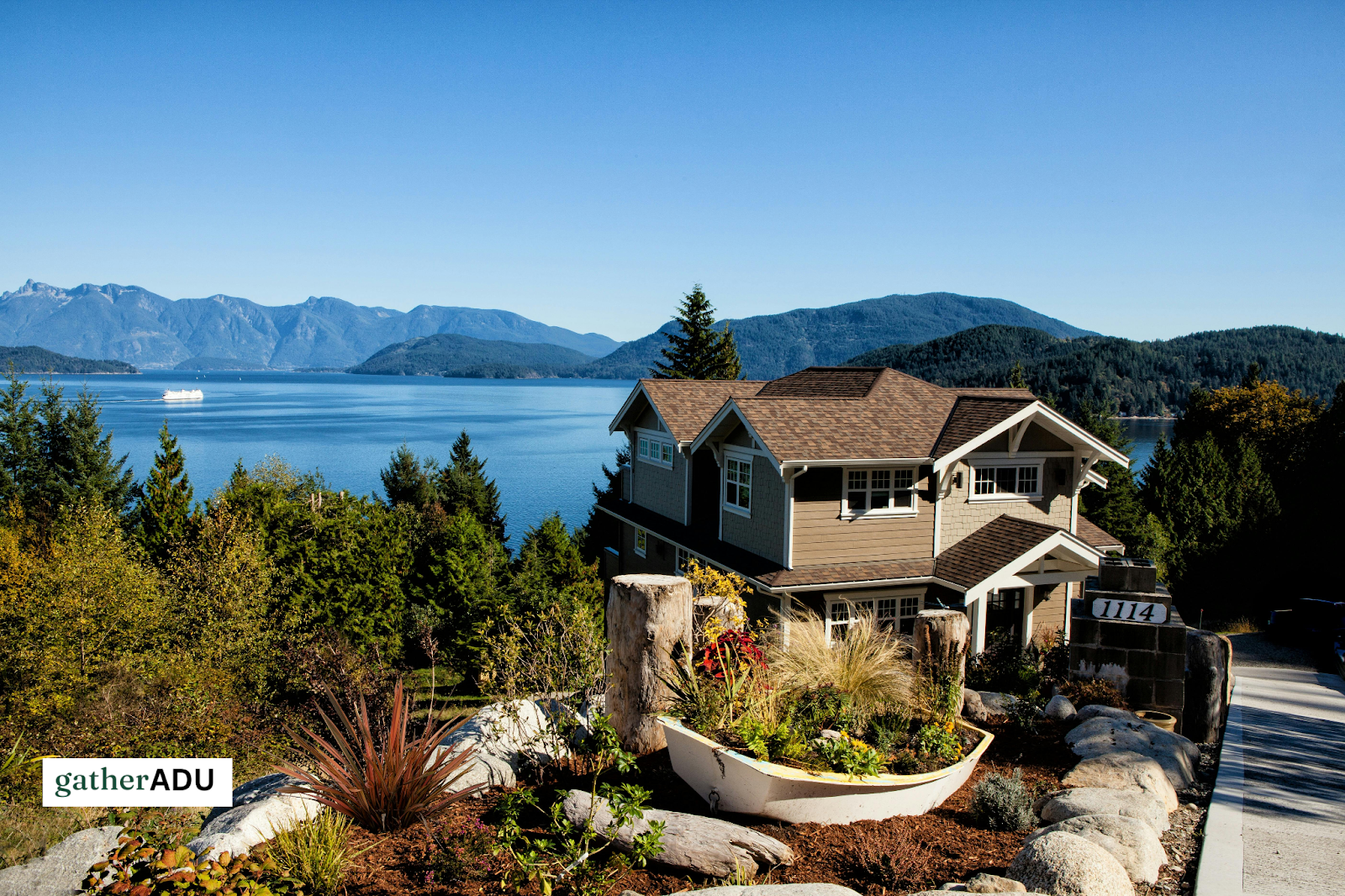ADU Knowledge
October 21, 2025
Design For Sustainability: Make Washington ADUs Rain-Ready

.png)
Schedule a free appointment with one of our ADU experts.
Get ADU QuoteOr call: (323) 591-3717
Washington ADUs are built rain-ready with durable materials like fiber cement siding and sloped metal roofs. They include rainwater harvesting, open rainscreens, and energy-efficient insulation. Low-Impact Development (LID) features such as rain gardens and permeable paving- manage stormwater sustainably, enhancing performance in Washington’s wet climate.
GatherADU gives you the expert help you need for a top-quality build. We manage the design and pick strong, green parts that save energy and water. Also, they cut down on costly, frequent fixes. Plus, well-placed flashing and a good rain screen leave an air gap behind the siding. This gap lets any water that gets in drain out fast, keeping the structure dry.
ADU roofs and siding manage heavy rain effectively with water-shedding materials and expert installation. Sloped metal or asphalt shingle roofs, paired with rain screens behind fiber cement siding, allow quick drainage. Proper flashing, underlayment, and sealed joints ensure lasting protection against moisture damage.
These materials do two jobs at once. They make the unit last longer. Also, they cut down on costly, frequent fixes. Plus, well-placed flashing and a good rain screen leave an air gap behind the siding. This gap lets any water that gets in drain out fast, keeping the structure dry.

Essential water saving means using low-flow fixtures inside and a rain system outside. So, installing WaterSense toilets and showerheads significantly reduces water use indoors. Also, collecting rainwater provides a green alternative for watering or toilet flushing.
Here are some smart ways to make your ADU more water-efficient:
Beyond the fixtures, using smart appliances is the key to saving valuable resources. In the end, these simple, good water features help the planet. Also, they clearly lower your monthly bills. Designing for water efficiency involves a whole plan. By using these systems, you significantly reduce how much water your home uses. Also, these wise choices might win you local rebates or building costs. This makes the first cost much nicer.

The best insulation and ventilation for damp climates combine air-sealing insulation with balanced airflow systems. Using spray foam or rigid foam boards prevents air and moisture intrusion. An Energy Recovery Ventilator (ERV) brings in fresh air and controls humidity, helping to stop mold growth and condensation problems.
When insulation and ventilation work together, homes stay dry, healthy, and energy-efficient. This balanced system reduces heating and cooling needs, maintains fresh indoor air, and prevents damp buildup. As a result, ADUs remain comfortable, durable, and sustainable throughout the year, even in persistently wet climates.
ADU design can integrate renewable energy through solar-ready construction, energy-efficient systems, and sustainable materials. Strengthening the roof for solar panels, adding heat pumps, and designing for passive solar gain make ADUs energy-smart. Using recycled or locally sourced materials enhances sustainability while preparing the unit for clean, renewable power.
Achieving green certifications such as LEED or Built Green validates an ADU’s energy efficiency and environmental responsibility. Incorporating water-saving technologies, high-performance insulation, and smart orientation reduces long-term costs and carbon impact. Together, these strategies create durable, eco-friendly ADUs that meet modern green building standards.
Do you feel lost trying to build a truly rain-ready, green ADU in Washington? The technical details are a massive headache. Many owners struggle to pick the right moisture barriers, add complex systems like ERVs, or find local builders who truly know green building for wet weather. This doubt leads to significant project delays, hidden structural rot, and utility bills that shock you long after construction ends.
GatherADU provides the expert clarity you need for a high-performance build. We handle the technical design and selection of durable, energy-efficient, and water-wise components that are essential for a Pacific Northwest ADU. Our team ensures your unit features the best insulation, air quality systems, and rain management features available. Reach out now to start your project with confidence, securing a comfortable and low-maintenance ADU.
Rain-ready ADUs use sloped roofs with metal or quality shingles and rain screen wall systems. This, consequently, allows water to shed from the exterior quickly and prevents moisture from getting trapped. Also, naturally, the design includes drainage that moves water away from the foundation.
A rain screen is a small gap between the siding and the wall structure. Importantly, this gap creates an air path. It lets any water that sneaks past the siding quickly drain out and dry up, thereby protecting the walls from rot and mold.
An ERV brings in fresh outdoor air but keeps the heat or cool air inside. Therefore, it helps control humidity. This prevents wet air from building up indoors and stops mold growth, ultimately making the ADU a healthier space.
No, you generally use the system for non-drinking needs only. Specifically, for example, collected rainwater is perfect for watering plants, flushing toilets, or washing clothes. However, of course, drinking water still needs to come from an approved municipal or well source.
Fiber cement is very durable and resists moisture and pests, meaning it lasts longer than wood. This, in turn, reduces the need for frequent replacements and maintenance. Additionally, it is a good fire-resistant option, which adds safety.
.png)
Not sure where to start with your ADU project?